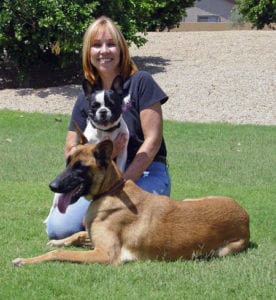Dos and Don'ts of Choosing the Right Dog Trainer
Choosing the right dog trainer is tough. Sure, you already know the hand-lettered sign on the freeway off-ramp isn’t a good place to start. Beyond that, though, what’s a dog lover to do?
A good trainer helps you learn to teach your dog in a way that doesn’t promote fear, require you to dominate your dog, or unnecessarily punish your dog. Along with your veterinarian, your dog trainer plays a huge role in behavioral health and molding the relationship you share with your pet. Here are seven “dos” and three “don’ts” that will help you find the best trainer for you and your dog.
DO:
Set training goals ahead of time. What results are you after? Good house manners? Competitive obedience skills? Therapy dog certification? Your goals will help you find a trainer whose skills and experience align with your needs.
Ask prospects about their training and experience. Have they had formal training? Where? For how long? What degrees or certificates have they earned? And—most importantly—how do the use to stay up-to-date and grow their skills with continuing professional education?
Ask about the training methods they use. Punishment (often called “correction” because it sounds kinder) shouldn’t be a first-line approach. Punishment can contribute to fearful behaviors. Imagine trying to learn when you’re constantly afraid of making a mistake! Look for a trainer who uses primarily positive reinforcement based techniques.
Get a list of recommended equipment. Reward-based trainers use tools like treat bags, clickers, targets, and head collars. Choke collars, pinch collars, electric (“E” or shock) collars, heeling sticks, and throwing chains usually occupy the tool bag of correction-based trainers.
Ask for—and check—references and read reviews online. Do these testimonials support what you’ve been told so far?
Watch a few classes or private sessions. Good trainers have nothing to hide and should welcome your interest and observation. Make note of how the trainer works and interacts with dogs and their people. Are they the kind of teacher YOU will learn from?
Trust your gut. If you or your dog have any apprehensions about a candidate, move on to the next one.
DON’T:
Get confused by credentials. There is no certification or license required to train dogs. Almost all trainers advertise some sort of certification; they’re not all the same. The Association of Professional Dog Trainers website has a great list of dog training certifications and what they mean to help you sort through all those letters!
Believe the hype. Behavior is variable and unpredictable. Trainers should be willing to ensure your satisfaction, but steer clear of anyone who makes unrealistic guarantees or promises about results.
Expect a trainer to do it all alone. Successfully training your dog requires your participation and commitment. Do your homework or you won’t be happy with the results!
Training should be a fun, safe, and compassionate way to strengthen the bond you share with your dog (or any pet, for that matter). Use the tips above to choose a trainer that fits your goals, philosophy, and needs. And don’t forget that your veterinarian is a trained source of information on all aspects of pet health!


